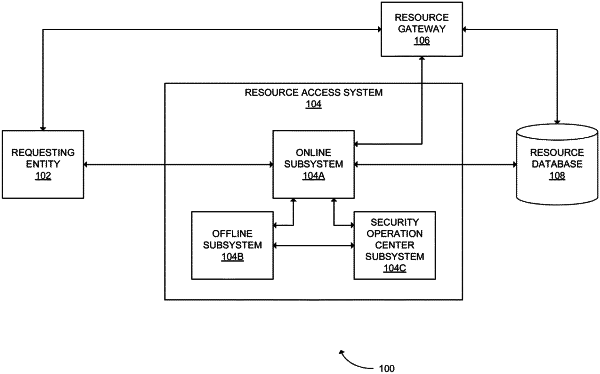| CPC H04L 67/535 (2022.05) [G06F 18/214 (2023.01); G06F 18/24 (2023.01); G06N 20/20 (2019.01); H04L 63/102 (2013.01); H04L 63/105 (2013.01); H04L 63/20 (2013.01); H04L 67/30 (2013.01)] | 20 Claims |

|
1. A method comprising:
determining, by a resource access system, a first plurality of analytical model types;
creating, by the resource access system, for each first analytical model type, a plurality of first submodels, the plurality of first submodels differing by one or more hyperparameters, wherein the one or more hyperparameters are set before training the plurality of first submodels and wherein the one or more hyperparameters affect training and performance of the plurality of first submodels;
training, by the resource access system, the plurality of first submodels using first training data corresponding to an entity of a plurality of entities, wherein each first submodel of the plurality of first submodels is configured to produce a trust score corresponding to a feature vector input to that first submodel;
determining, by the resource access system, a combination of first submodels to form an ensemble classifier model corresponding to the entity, wherein the ensemble classifier model is configured to produce a combined trust score by combining trust scores produced by the first submodels; and
storing, by the resource access system, the ensemble classifier model in a model cache, wherein the model cache stores a plurality of ensemble classifier models corresponding to the plurality of entities respectively.
|